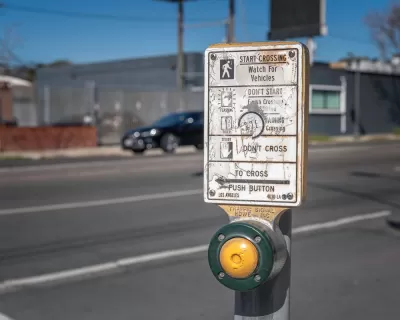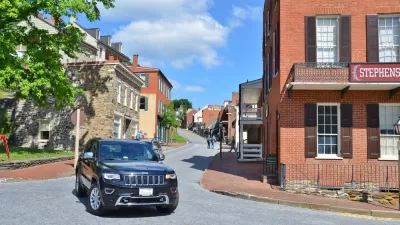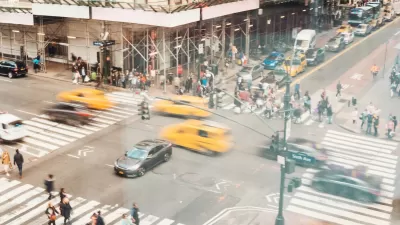Communities of color have significantly higher rates of traffic fatalities, according to federal research.

New federal data from the National Highway Traffic Safety Administration (NHTSA) reveals “significant disparities” in traffic fatalities between racial and ethnic groups in the United States, according to an article by Dan Rosenbaum in Smart Cities Dive.
Research undertaken in 2022, the first of its kind to examine “traffic safety in the context of race and ethnicity,” found that traffic deaths per 100,000 varied from 10.92 for White people to 24.75 for American Indian or Alaska Native people. Pedestrian deaths showed even stronger disparities: “In 2018, the pedestrian fatality rate for American Indian or Alaska Native people was 3.42 times the rate for White people; for Black people, it was 1.97 times the rate for White people. Asian pedestrians died at slightly more than half the rate of White pedestrians.”
The NHTSA did not offer an answer for why these disparities exist, but infrastructure—or the lack thereof in historically disinvested neighborhoods—could be a factor.
Shannon Hughes, a deputy regional administrator for NHTSA, said reducing traffic fatalities starts with a “safe system approach” that acknowledges the potential for human error and focuses on safe infrastructure that minimizes risk for all road users. “DOT’s safe system approach calls not just for safer drivers and pedestrians, but for safer road and vehicle design, reduced speeds and better post-crash care.”
FULL STORY: Racial and ethnic disparities in traffic deaths revealed in NHTSA report

Planetizen Federal Action Tracker
A weekly monitor of how Trump’s orders and actions are impacting planners and planning in America.

Congressman Proposes Bill to Rename DC Metro “Trump Train”
The Make Autorail Great Again Act would withhold federal funding to the system until the Washington Metropolitan Area Transit Authority (WMATA), rebrands as the Washington Metropolitan Authority for Greater Access (WMAGA).

The Simple Legislative Tool Transforming Vacant Downtowns
In California, Michigan and Georgia, an easy win is bringing dollars — and delight — back to city centers.

The States Losing Rural Delivery Rooms at an Alarming Pace
In some states, as few as 9% of rural hospitals still deliver babies. As a result, rising pre-term births, no adequate pre-term care and harrowing close calls are a growing reality.

The Small South Asian Republic Going all in on EVs
Thanks to one simple policy change less than five years ago, 65% of new cars in this Himalayan country are now electric.

DC Backpedals on Bike Lane Protection, Swaps Barriers for Paint
Citing aesthetic concerns, the city is removing the concrete barriers and flexposts that once separated Arizona Avenue cyclists from motor vehicles.
Urban Design for Planners 1: Software Tools
This six-course series explores essential urban design concepts using open source software and equips planners with the tools they need to participate fully in the urban design process.
Planning for Universal Design
Learn the tools for implementing Universal Design in planning regulations.
Smith Gee Studio
City of Charlotte
City of Camden Redevelopment Agency
City of Astoria
Transportation Research & Education Center (TREC) at Portland State University
US High Speed Rail Association
City of Camden Redevelopment Agency
Municipality of Princeton (NJ)





























